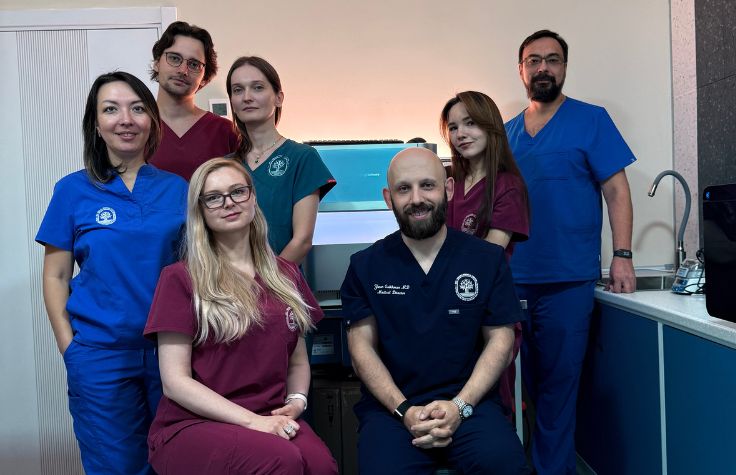
November 1, 2016
Gene fusions, first discovered in the early 1980s, are frequently key events in tumor growth. Identifying fusions can be challenging. RNA sequencing (RNA-Seq) using next-generation sequencing (NGS) technology offers the ability to capture fusion transcripts in a single assay. Using a more targeted approach enables researchers to focus on key genes of interest, yet maintains the ability to detect novel fusion partners. Compared to traditional array-based approaches, targeted RNA-Seq is highly sensitive, with a broader dynamic range, which robustly detects transcripts of low abundance.
To help clinical researchers gain a deeper understanding of fusions in cancer classification and progression, Illumina, in partnership with its customers, created the TruSight RNA Fusion Panel. It allows in-depth assessment of 507 genes that have been cited in publicly available databases and implicated in various cancers, including solid tumors, soft tissue cancers, and hematological malignancies. TruSight RNA Fusion enables cost-effective analysis of limited and degraded samples, such as formalin-fixed, paraffin-embedded (FFPE) tissue, on a desktop sequencer such as MiSeq® or MiniSeq™. The included analysis software provides a simple report showing the fusions detected along with the cytogenetic coordinates and any known disease association.1. This intuitive software solution enables even those new to Next-Generation Sequencing (NGS) to run the TruSight RNA Fusion panel.

We spoke with Ravindra Kolhe, MD, PhD, Assistant Professor, Department of Pathology, Medical College of Georgia at Augusta University, and Director of the Georgia Esoteric & Molecular Labs, who helped develop the TruSight RNA Fusion Panel. The Medical College of Georgia at Augusta University is the state’s only public medical school and one of the oldest and largest medical schools in the country. The mission of the Georgia Esoteric and Molecular Pathology Labs at MCG-AU is aligned with that of the Institution in its three focus areas, ie, education, clinical diagnostics and care, and translational research.
What disorders are you focused on?
Ravindra Kolhe, MD, PhD: Our area of emphasis with gene fusion studies in cancer with a particular focus on bone and soft tissue tumors, and hematological malignancies. We're also investigating alterations in gynecological cancers, especially endometrial sarcomas. In non-oncological areas, we’re researching applications in gynecological embryology, particularly uterine malformations where earlier studies implicated significant gene fusion mechanisms. This very broad and comprehensive approach will likely help us identify novel gene fusions involved in the pathogenesis of these disorders.
How are you using the TruSight RNA Fusion Panel?
RK: The Georgia Esoteric and Molecular Pathology Labs collaborated with Illumina to define the content on the TruSight RNA Fusion panel and has predominantly directed its application to areas of translational pathology.
If you look at the new generation of genetic testing options, there are two methods. One is NGS and the other is microarrays, where we look at genomic aberrations. You cannot identify gene fusions on microarrays nor can you identify them easily through targeted DNA sequencing, so there was this knowledge gap where we could not identify gene fusions on a discovery scale. This is what sparked our collaboration with Illumina and this has yielded a comprehensive (507) gene panel that allows us to examine gene fusions in a wide range of disorders.
What are your goals for using the TruSight RNA Fusion Panel?
RK: Overall, we have four goals for using this technology. The first is to assess the ability to detect fusions and understand whether the panel may complement or replace fluorescence in situ hybridization (FISH) testing; the second is to identify targetable fusions, meaning fusions which can be targeted by different therapeutics or drugs; the third is to find cancer associated fusions which may help us decipher their role in oncogenesis; finally, and perhaps the most important goal, is to make novel discoveries. Ultimately, we want to see if we can identify new fusions, which may play a vital role in oncogenesis and thereby identify new targets to understand pathogenesis and possibly new therapeutic interventions. Until now, nobody has looked at these lesions on such a massive scale. We’ll be able to examine 507 genes and determine the significance of gene fusions in oncology research. This unique and innovative approach will, for the first time, allow cancer researchers to execute a comprehensive and strategic analysis of many cancers where they have not been able to understand either the oncogenesis or they have not found a promising target.
What are you hoping to discover through your research?
RK: We’re looking to better understand the cause and pathogenesis of these tumors or these uterine malformations. For example, what is causing a particular form of leukemia? Other than the cause of the disease, we are also seeking to understand whether the fusions that we identify are also targetable fusions; ie. can they be targeted by a specific drug- that would be the ideal accomplishment.
What are the advantages of using the TruSight RNA Fusion Panel?
RK: The advantage of RNA sequencing with the TruSight RNA Fusion Panel is that we simply need to have a gene of interest. This unique technology helps us then identify other genes that are involved in the translocation. It's an exciting discovery tool that will facilitate identification of novel fusions, which may be involved in oncopathogenesis or development of particular disorders of interest. Identification of gene fusion in oncology research can definitely provide substantial new, tumor-specific information.
A challenge when using Florescence in situ hybridization (FISH), which has been the gold standard in detection of fusions, is its limited scope of discovery, since typically you can only detect one gene at a time. Another challenge with this method is that there must be sufficient information about the target in order to design the appropriate probes. This technique also lacks high-resolution molecular characterization. That’s because the FISH probes are of significant size so that you can identify a region on the DNA, but you cannot identify the actual genes in most cases and this information is essential for understanding the identity of these fusion partners.
RNA sequencing technology helps us overcome these barriers by accurately identifying fusion of all the genes in the panel in a single sequencing assay - even without the prior knowledge of fusion partners or break points. The panel works for most of the sample types – especially FFPE tissue. Most, if not all, of our samples in the validation set were from these FFPE samples, and they yielded results with excellent accuracy at an affordable price.
What has been your experience using the TruSight RNA Fusion panel so far?
RK: Our experience ranges from developing the panel to using it. First, we worked closely with Illumina to actually develop the content and to identify the genes we wanted to include in the panel. We ended up deciding on these 507 genes, thereby creating a global pan-cancer fusion panel, which will cover most, if not all, of the genes that are involved in many disorders, both in oncology and non-oncological diseases.
From there we had three phases: training, validation, and identifying an unknown set of cases. The training set was a group of cases in which we had previously verified gene fusion panels via PCR. Our validation was done through FISH with or without unknown partners. There was 100 percent correlation in the training phase as well as with the validation set, both on hematological cases as well as sarcomas. We presented this data1,2,3 at the United States and Canadian Academy of Pathology meeting in Seattle, in March 2016.
How will this improve your research moving forward?
RK: For many years, existing technology and methods have limited our ability to identify new gene fusions that are related to cancer development. The Illumina TruSight RNA Fusion Panel is a unique, game-changing, 507 gene panel allowing us to examine a massive collection of genes in one assay. This not only reduces time and effort, but also significantly reduces cost, as opposed to doing one or two gene panels by FISH. Finally, as we enhance our knowledge with these methods, it will allow us to develop and design new diagnostic panels for clinical applications allowing us to have a significant impact on the management of our patients in the future.
1 According to the Mitelman database (http://cgap.nci.nih.gov/Chromosomes/Mitelman)
For Research Use Only. Not for use in diagnostic procedures.


